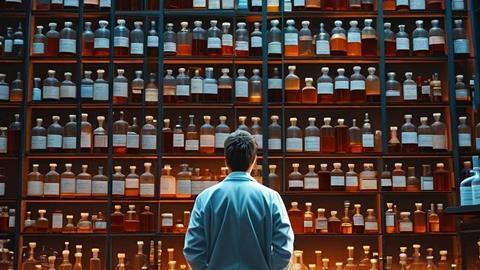Health and safety in the laboratory is an issue that most researchers give too little thought to, according to occupational hygienist Arco Engelen. During the LabSafety event on 20 May, he will not only point out the elephant in the room, but also provide tools for dealing with health and safety issues.
Working with hazardous, toxic substances - which is unavoidable in the laboratory - inherently carries health and safety risks. ‘People genuinely assume that if you use PPE [personal protective equipment, ed.] you are automatically safe’, says Arco Engelen, occupational hygienist at HumanNova. ‘But that only reduces exposure, it doesn’t prevent it.’

Looking for alternatives
Engelen explains that companies are often unaware that PPE should only be used as a last resort. ‘If you look at it purely from a safety perspective – think of cutting or poisoning risks – then PPE makes a lot of sense. But in the health world, it is mainly about exposure to toxic substances, and then there are other steps you need to take first.’
These steps can be found in the occupational hygiene strategy, which focuses on alternatives, collective measures, personal protection and finally personal protective equipment.
‘Step one is not to wear a face mask, but to see if there are alternative substances with a lower risk. Ethanol – a carcinogen – is still widely used because it is “in the protocol”, but a safer alternative is isopropanol, which can perform the same function.’
Dozens of types
Something that laboratories often do well is step two, the collective measures such as good ventilation. ‘If the collective measures are still not enough, then step three is personal protection: not wearing a lab coat in a room where people eat, washing your hands before leaving the lab, caps on bottles, and so on.’
Only if all these previous steps do not give enough results should you resort to PPE. ‘But even then you have to be careful: for example, there are dozens of types of gloves, each with its own function, so which one do you buy?’
During his presentation, Engelen will also discuss risk assessment for toxic substances. ‘It is important to be thorough: not only should you know which and how many substances you have in stock, but also how much exposure there is to them. And when you are working with multiple substances, which is often the case in the lab, it is difficult to say what the mix of substances will be and what you will be exposed to. It takes months of research to get that right.’
Lot of work
So what practical steps can companies and laboratories take today? Engelen is crystal clear: ‘Keep only the substances you really need and use. For the rest, you need to know the risks, so have a VIB or MSDS sheet and process it with digital tools. This will give you a list of the substances you use and for which you know the exposure. You can then prioritise: which substance poses the highest risk, is there an alternative and how can I reduce the risk in other ways. It is a lot of work, but if you are serious about your health, it is essential.’
LabSafety 2025
20 May, 09:00-16:30
Hotel Van der Valk, Vianen
Arco Engelen speaks at 10:00













Nog geen opmerkingen